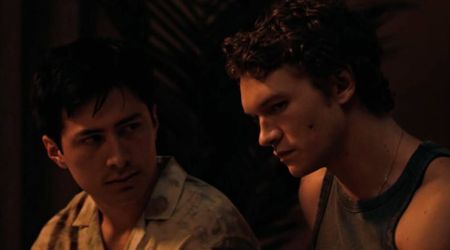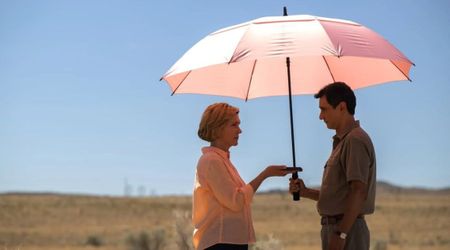'Flannery': Flannery O'Connor's literary works include themes of race and segregation, but was she a racist?

'Flannery', an award-winning documentary chronicling the life and works of critically-acclaimed American author Flannery O'Connor will be released on virtual cinemas today, July 17. O'Connor is one of the most celebrated fiction writers of her time, who garnered a fanbase of ardent readers with her use of dark humor and gothic elements in the portrayal of the rural American South. Her works also centered on themes from her faith where she combined topics of alienation and the relationship between individual and God with grace, redemption, and other Catholic motifs. Her work is regarded as impactful literature that forces one to confront reality in a way that also feasibly captured the reader's attention.
O'Connor's creative works are especially riddled with race-related themes that reflected the social situations at the time that she had been writing in the mid-20th century. The subject of race was a rampant one in America, with the South being governed by the Jim Crow laws passed by the Supreme Court. These laws of segregation implied that the Blacks were intellectually inferior to the whites. The era of O'Connor's literary prominence was thus influenced by a tumultuous time in American history in the arena of race. Things took a drastic turn when in 1954, the Supreme Court ruled that schools were required to integrate, and 29-year-old O'Connor experienced a sense of unease as she watched her Southern society evolve from a hierarchical color-coded society to one that turns a blind eye to color.
In her fiction, the southern-hierarchy often clashes with integration and multi-culturalism, and she also tended to deliberately avoid defining some of her characters by their race. However, some of the contexts in her works and letters that she had written over the years to her literary peers and friends suggest that O'Connor, a devout Catholic, was also racist, although it wasn't blatant at the time. In the early 2000s, the author was excised by Catholics, and her works were banned in a set of southern schools. While she was initially known to be anti-racist, a revision of her works said otherwise, and she was placed on the forbidden list on the grounds of racism.

In 1943, when she was 18, O'Connor went on a summer trip with two of her cousins to the north. They explored Manhattan, where they visited Chinatown, St Patrick's Cathedral and Columbia University, and traveled to Massachusetts to visit Radcliffe, where one of her cousins was currently studying. However, she disliked the schools and even wrote about it in postcards and letters addressed to her mother, which were made available to scholars in 2014. They clearly depicted that O'Connor was a young bigot because in Massachusetts she had been disturbed by an African-American student in her cousin's class, while in Manhattan, she had sat with her cousins among people of color. In Columbia, she saw that White and Black students sat together, and used the same restroom, which she found appalling.
Throughout her life, her political leanings were characterized by her broad and progressive outlook linked to her Catholic faith. She voted for John F Kennedy in 1960 and also supported the work of Martin Luther King Jr, as well as the civil rights movement. Yet in a letter to her friend, Maryat Lee, a playwright and civil rights activist, dated May 3, 1964, she wrote: "About the Negroes, the kind I don’t like is the philosophizing prophesying pontificating kind, the James Baldwin kind. Very ignorant but never silent. Baldwin can tell us what it feels like to be a Negro in Harlem but he tries to tell us everything else too. M. L. King I dont think is the ages great saint but he’s at least doing what he can do & has to do." She further continued, "Don’t know anything about Ossie Davis except that you like him but you probably like them all. My question is usually would this person be endurable if white. If Baldwin were white nobody would stand him a minute. I prefer Cassius Clay. 'If a tiger move into the room with you,' says Cassius, 'and you leave, that dont mean you hate the tiger. Just means you know you and him can’t make out. Too much talk about hate.' Cassius is too good for the Moslems".

O'Connor's most prominent remarks in the letters that she wrote to Lee are sincere. On that day in May, when she penned down a letter addressed to her friend, Richard Russel, the Democrat of Georgia had led a filibuster in the Senate to block the Civil Rights Act. O'Connor made her stand clear in a passage in the letter saying, “You know, I’m an integrationist by principle & a segregationist by taste anyway. I don’t like negroes. They all give me a pain and the more of them I see, the less and less I like them. Particularly the new kind.” And although she developed onto a self-aware writer, this habit of bigotry persisted in her letters in-jokes, asides, and also the constant use of the N-word. However, her remarks show a gradual increase in intensity as she continued to use them.
While they are objectionable in the current scenario, there have also been arguments that they are just remarks made in chatty letters. So they are more expressive than being representative. Many critics who have been fans of O'Connor's works have also maintained that the statements that she made about Black people were problematic, while others say that her fiction is an extension of the inflammatory comments that she made about the Blacks, race-relations, and integration.










